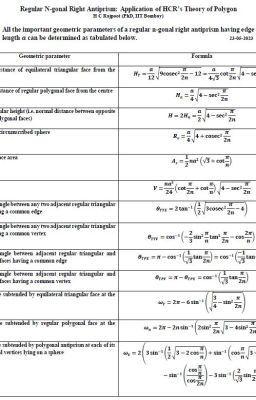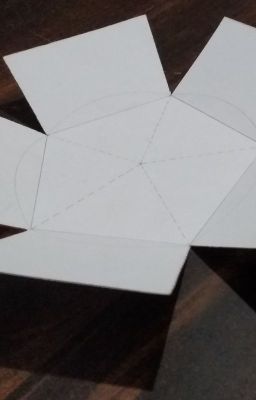Regular N-gonal Right Antiprism
A regular n-gonal right antiprism is a semiregular convex polyhedron which has 2n identical vertices all lying on a sphere, 4n edges, and (2n+2) faces out of which 2 are congruent regular n-sided polygons, and 2n are congruent equilateral triangles such that all the faces have equal side. The equilateral triangular faces meet the regular polygonal faces at the common edges and vertices alternatively such that three equilateral triangular faces meet at each of 2n vertices. This paper presents, in details, the mathematical derivations of the generalized and analytic formula which are used to determine the different important parameters in terms of edge length, such as normal distances of faces, normal height, radius of circumscribed sphere, surface area, volume, dihedral angles between adjacent faces, solid angle subtended by each face at the centre, and solid angle subtended by polygonal antiprism at each of its 2n vertices using HCR's Theory of Polygon. All the generalized formulae have been derived using simple trigonometry, and 2D geometry which are difficult to derive using any other methods.…












